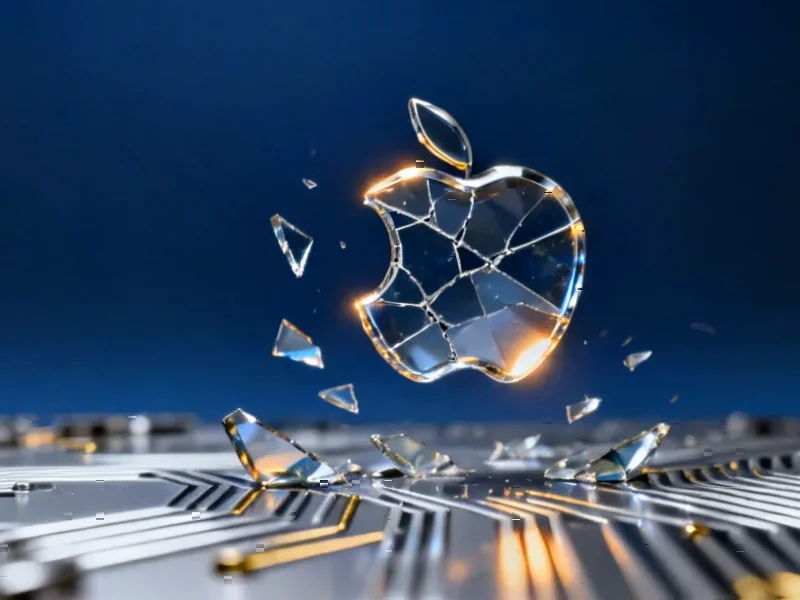According to AppleInsider, Apple has revealed it will likely spend approximately $3.4 billion covering tariff-related costs for iPhone and similar products through the end of 2025, choosing to absorb these expenses internally rather than passing them to consumers. This approach contrasts sharply with competitors like Microsoft, which has implemented widespread price increases across its product lines. The analysis explores alternative ways Apple could have allocated these funds, including potential acquisitions like device management company Jamf ($2.2 billion), autonomous driving specialist WeRide ($3.23 billion), or even purchasing luxury vehicles for all 12,000 Apple Park employees. While these alternatives present intriguing possibilities, the article acknowledges that Apple’s decision to shield customers from price increases ultimately benefits consumer relationships.
Table of Contents
The Strategic Calculus Behind Apple’s Tariff Decision
Apple’s decision to absorb $3.4 billion in tariffs represents a sophisticated pricing strategy that few companies could execute. While the immediate financial impact is substantial, this move serves multiple strategic purposes beyond simple customer goodwill. For a company of Apple’s scale with massive profit margins, maintaining pricing stability during economic uncertainty provides competitive insulation. When consumers see consistent pricing while competitors raise prices, it reinforces Apple’s premium positioning as delivering superior value rather than simply being more expensive. This approach also protects Apple’s ecosystem lock-in – price increases could push marginal customers toward Android alternatives, potentially costing far more in lifetime ecosystem value than the immediate tariff expense.
The Microsoft Contrast and Market Dynamics
The comparison to Microsoft’s pricing strategy reveals fundamental differences in market position and product strategy. Microsoft operates in more competitive enterprise and consumer software markets where price sensitivity varies significantly across product lines. More importantly, Microsoft’s recent price increases reflect its transition toward subscription-based services where periodic price adjustments have become normalized. Apple’s hardware-centric model relies on predictable pricing to maintain upgrade cycles and accessory ecosystems. The ability to absorb $3.4 billion without consumer impact also demonstrates Apple’s extraordinary supply chain efficiency and margin structure – advantages that have taken decades to build and that competitors cannot easily replicate.
The Reality of Alternative Investments
While the article’s acquisition suggestions are entertaining thought experiments, they overlook the strategic rationale behind Apple’s actual M&A approach. Apple typically acquires smaller technology companies for specific capabilities rather than large, established businesses. The suggested Jamf acquisition, while interesting from an enterprise management perspective, would represent a significant departure from Apple’s focus on consumer technology. More fundamentally, Apple’s acquisition strategy prioritizes technology integration and talent acquisition over market consolidation. The company has demonstrated repeatedly that it prefers developing capabilities internally rather than buying mature businesses with established cultures and product roadmaps that may not align with Apple’s integrated approach.
Long-term Financial and Brand Implications
The $3.4 billion tariff expense, while substantial, represents less than 4% of Apple’s projected net income for the period, making it a manageable strategic investment in customer loyalty. More importantly, this decision reinforces Apple’s brand positioning as a company that prioritizes user experience over short-term financial optimization. In an era where consumers are increasingly sensitive to corporate behavior and value propositions, Apple’s willingness to absorb external cost pressures rather than immediately passing them along builds substantial goodwill. This approach also provides flexibility for future pricing decisions – if economic conditions improve or tariff situations resolve, Apple maintains pricing power without having damaged consumer trust through previous increases.
Broader Industry Context and Precedent
Apple’s tariff absorption strategy reflects broader trends in how technology giants manage regulatory and economic challenges. Companies with significant market power and financial resources increasingly use their scale as a competitive weapon, absorbing costs that would cripple smaller competitors. This creates a challenging environment for emerging competitors who lack the financial flexibility to make similar strategic trade-offs. However, it also sets expectations among consumers and regulators about what large technology companies should be able to absorb. The decision may also reflect anticipation of future tariff reductions or trade policy changes, positioning Apple to benefit from improved margins without the reputational damage of having raised prices during challenging periods.



